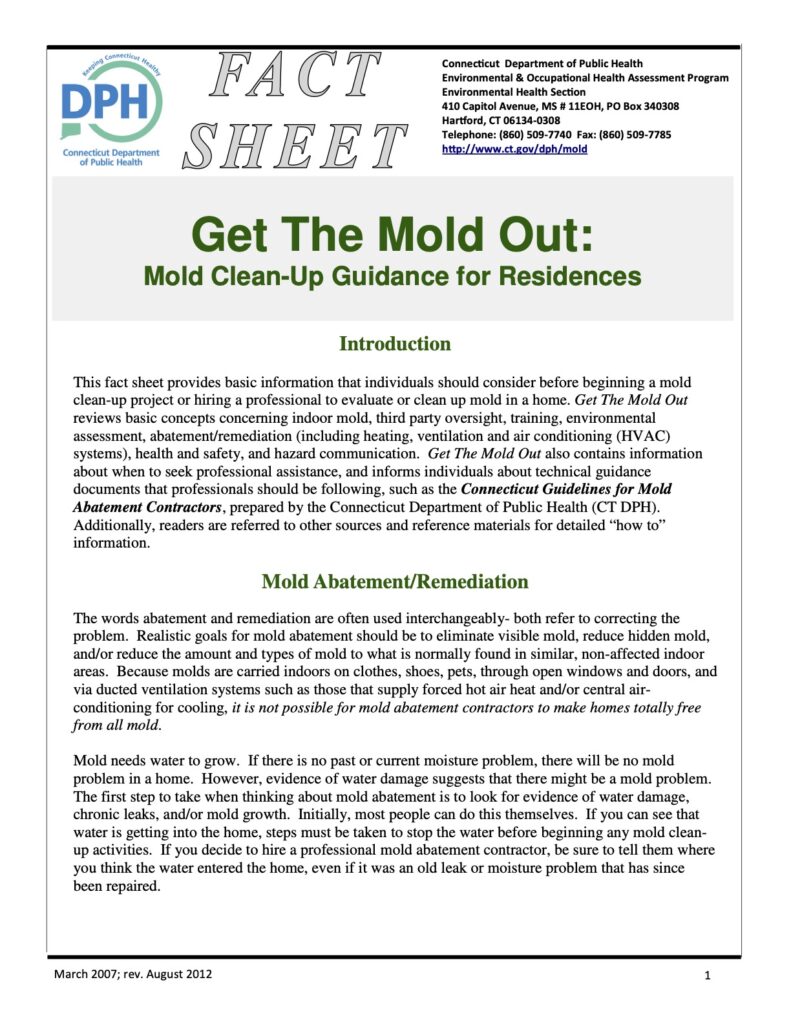
“Because molds are carried indoors on clothes, shoes, pets, through open windows and doors, and via ducted ventilation systems such as those that supply forced hot air heat and/or central air- conditioning for cooling, it is not possible for mold abatement contractors to make homes totally free from all mold.”
“Mold needs water to grow. If there is no past or current moisture problem, there will be no mold problem in a home. However, evidence of water damage suggests that there might be a mold problem.”
“Please note that the state of Connecticut does not license individuals or entities that perform mold inspection or mold abatement.”
“In most instances, CT DPH does not recommend testing the air or contaminated surfaces to find out how much or what kind of mold is present. The most important types of testing are the eyeball and nose tests—can you see or smell mold, and/or, do you see evidence of water damage?”
“If you smell a musty odor but cannot see visible growth, mold may be hidden behind wallpaper, paint, inside of wall cavities, etc.”
“Sometimes, people may choose to perform testing as part of an investigation to look for hidden mold, or for documentation purposes (i.e., for insurance or litigation). However, testing rarely contributes to understanding what has occurred from a health perspective. For further information about testing, see the CT DPH Fact sheet, Indoor Air Quality Testing Should Not Be Your First Move at http://www.ct.gov/dph/mold.”